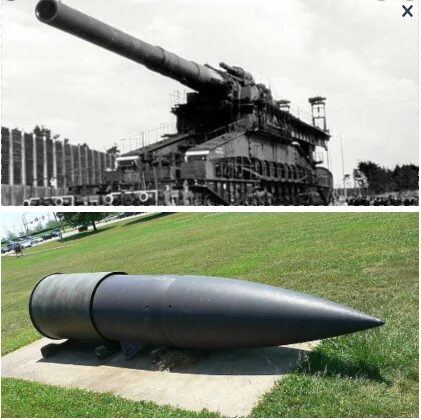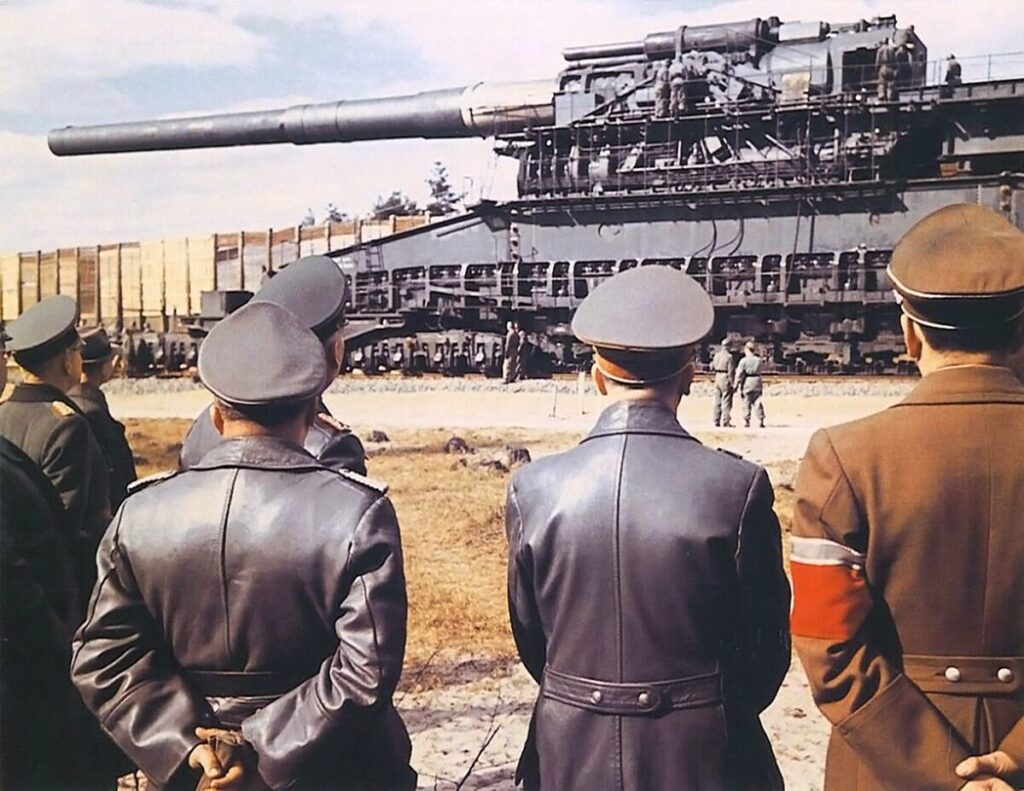During World War II, Nazi Germany produced one of the largest and perhaps most absurd weapons in world history: the Gustav Gun. Ordered by Adolf Hitler, this colossal cannon left a remarkable imprint on the history of warfare.

The Gustav Gun was named after Gustav Krupp von Bohlen und Halbach, Germany’s Minister of Armaments. The purpose of this astonishing weapon was to destroy enemy defenses and attack strategic targets with its massive size. Here’s what you need to know about this remarkable weapon:
Colossal Size and Power
- Long Range: The Gustav Gun is considered the world’s largest cannon with its 800-millimeter caliber barrel and 47-meter length. This colossal weapon had a range of up to 40 kilometers and could effectively hit enemy defenses.
- Destructive Power: The Gustav Gun possessed a destructive power that could penetrate heavy armor and shatter meters of concrete. With this capability, it was used as an effective tool to break through enemy defense lines.

Production and Deployment
- Challenging Production Process: The production of the Gustav Gun was highly challenging and expensive. German engineers had to develop special rails and wagons to transport the massive cannon. The production process consumed a significant portion of Germany’s war efforts, affecting resources and manpower.
- Deployment Areas: The Gustav Gun was used in major operations during World War II, such as the Siege of Leningrad and the Battle of Sevastopol. However, due to its difficult transportation and operation, its usage remained limited.

Consequences and Evaluations
While the Gustav Gun remains a notable weapon in military history, it is also remembered as an example of absurdity and waste. Its colossal size and production costs raised debates about its practicality. Ultimately, the Gustav Gun stands as one of the most striking and controversial weapons in the history of warfare.

